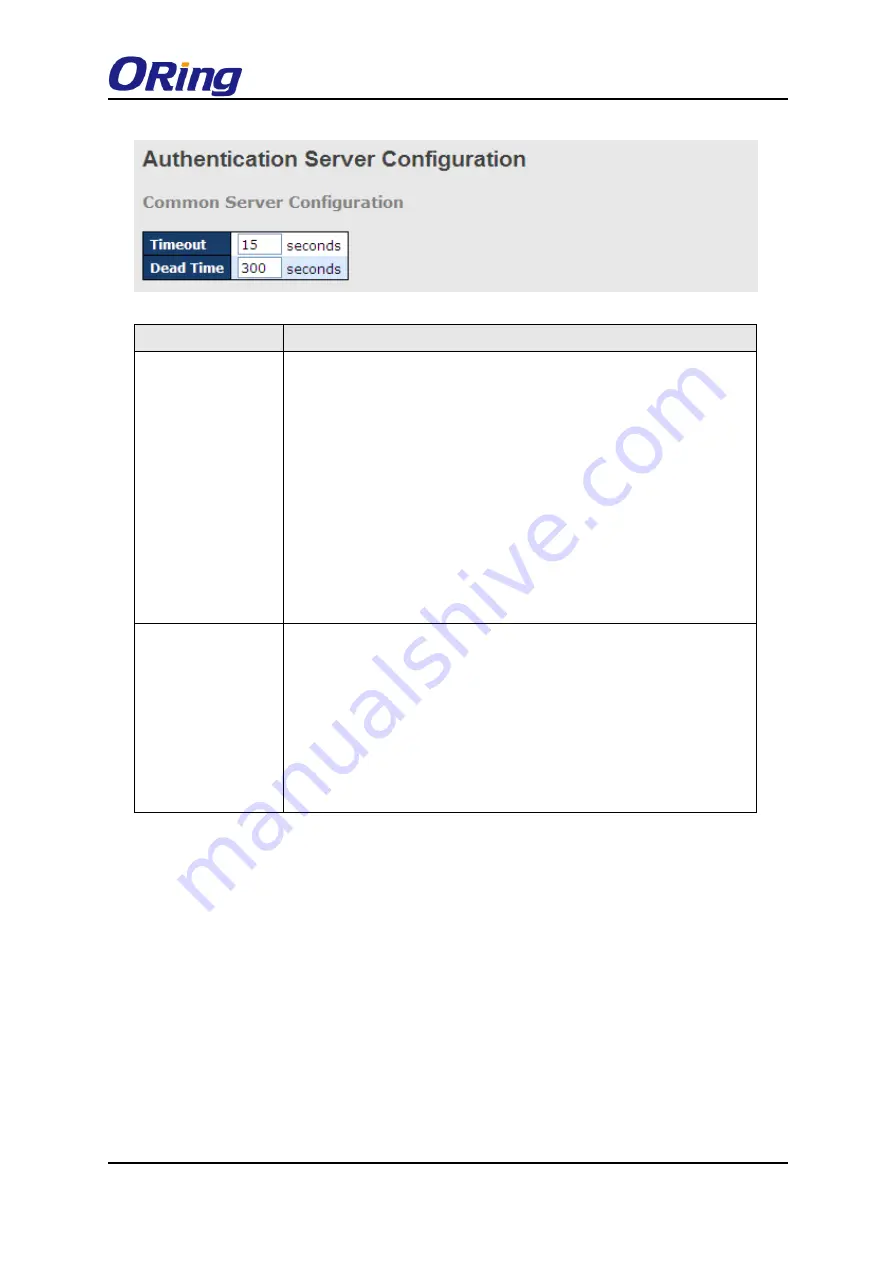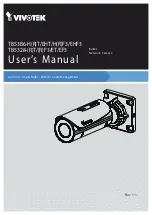
TGPS-9164GT-M12 Series User
Manual
ORing Industrial Networking Corp
120
Label
Description
Timeout
The timeout, which can be set to a number between 3 and 3600
seconds, is the maximum time to wait for a reply from a server.
If the server does not reply within this time frame, we will consider it
to be dead and continue with the next enabled server (if any).
RADIUS servers are using the UDP protocol, which is unreliable by
design. In order to cope with lost frames, the timeout interval is
divided into 3 subintervals of equal length. If a reply is not received
within the subinterval, the request is transmitted again. This
algorithm causes the RADIUS server to be queried up to 3 times
before it is considered to be dead.
Dead Time
The dead time, which can be set to a number between 0 and 3600
seconds, is the period during which the switch will not send new
requests to a server that has failed to respond to a previous request.
This will stop the switch from continually trying to contact a server
that it has already determined as dead.
Setting the dead time to a value greater than 0 (zero) will enable this
feature, but only if more than one server has been configured.
5.8.5 RADIUS
Authentication and Accounting Server
When a user requests network connection, a RADIUS client which receives the request will
perform an initial access negotiation with the user to obtain identity/password information. The
client then passes the information to a RADIUS server as part of an
authentication/authorization request.
The RADIUS server matches data from the authentication/authorization request with
information in a trusted database. If a match is found and the user's credentials are correct, the
RADIUS server sends an accept message to the client to grant access. If a match is not found
or a problem is found with the user's credentials, the server returns a reject message to deny
access. The NAD then establishes or terminates the user's connection. The NAD may then
















































